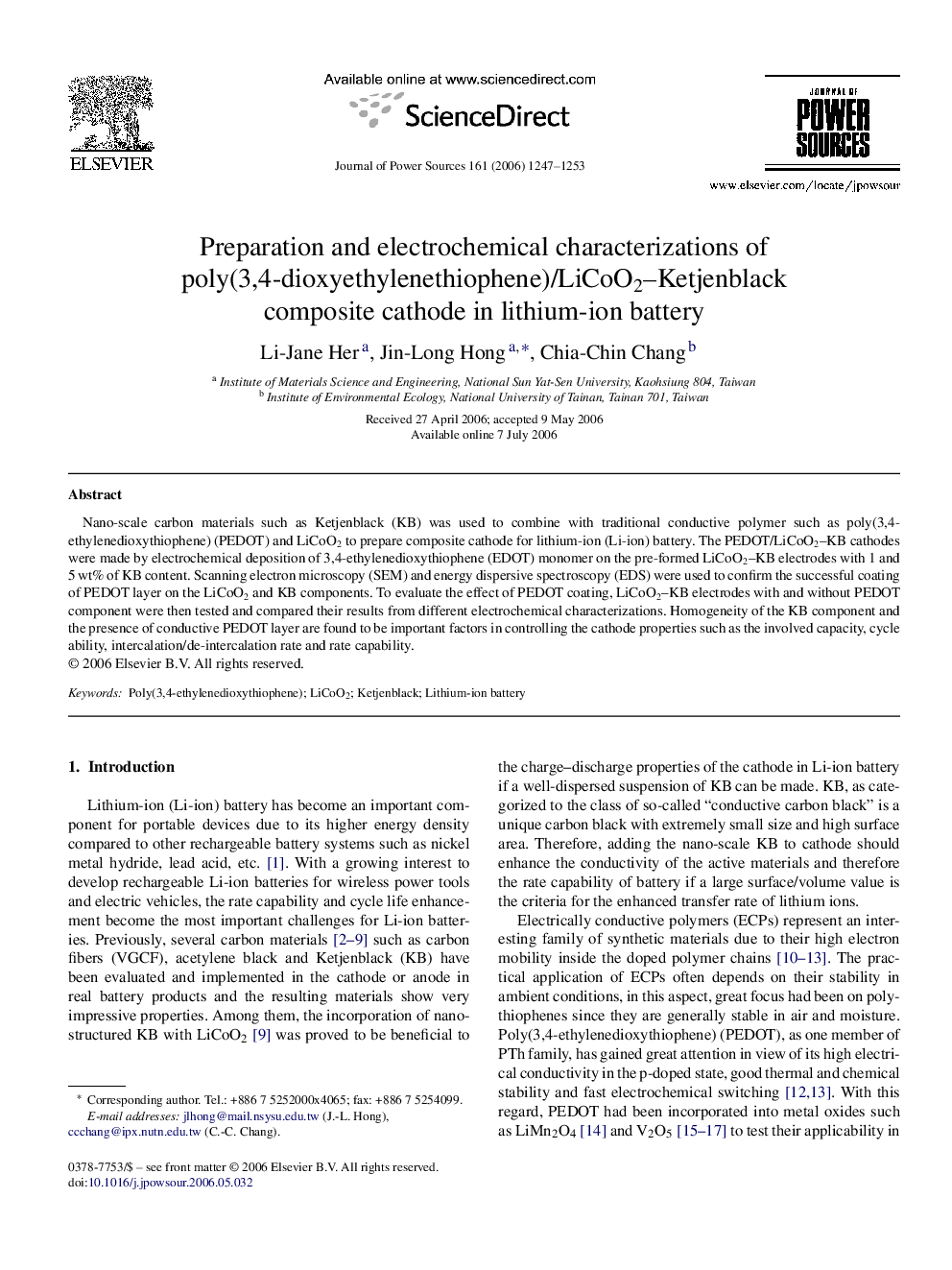| Article ID | Journal | Published Year | Pages | File Type |
|---|---|---|---|---|
| 1292076 | Journal of Power Sources | 2006 | 7 Pages |
Nano-scale carbon materials such as Ketjenblack (KB) was used to combine with traditional conductive polymer such as poly(3,4-ethylenedioxythiophene) (PEDOT) and LiCoO2 to prepare composite cathode for lithium-ion (Li-ion) battery. The PEDOT/LiCoO2–KB cathodes were made by electrochemical deposition of 3,4-ethylenedioxythiophene (EDOT) monomer on the pre-formed LiCoO2–KB electrodes with 1 and 5 wt% of KB content. Scanning electron microscopy (SEM) and energy dispersive spectroscopy (EDS) were used to confirm the successful coating of PEDOT layer on the LiCoO2 and KB components. To evaluate the effect of PEDOT coating, LiCoO2–KB electrodes with and without PEDOT component were then tested and compared their results from different electrochemical characterizations. Homogeneity of the KB component and the presence of conductive PEDOT layer are found to be important factors in controlling the cathode properties such as the involved capacity, cycle ability, intercalation/de-intercalation rate and rate capability.
